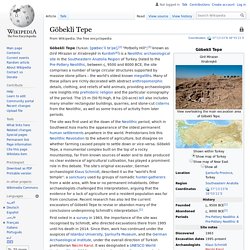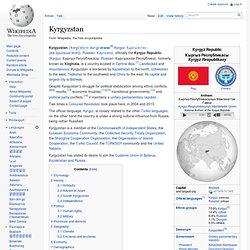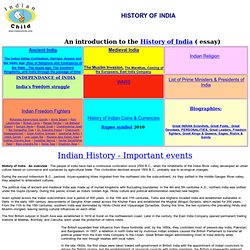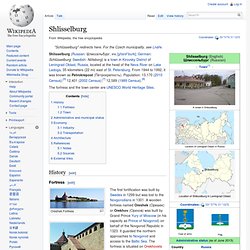

Göbekli Tepe. Neolithic archaeological site in Turkey First noted in a survey in 1963, the importance of the site was recognised by Schmidt, who directed excavations there from 1995 until his death in 2014.

Since then, work has continued under the auspices of Istanbul University, Şanlıurfa Museum, and the German Archaeological Institute, under the overall direction of Turkish prehistorian Necmi Karul. It was designated a UNESCO World Heritage Site in 2018, recognising its outstanding universal value as "one of the first manifestations of human-made monumental architecture".[5] As of 2021[update], less than 5% of the site has been excavated.[6] Background Göbekli Tepe was built and occupied during the Pre-Pottery Neolithic (PPN)—the earliest division of the Neolithic period in Southwest Asia—which is dated to between 9600 and 7000 BCE.
Basque Country (greater region) Kyrgyzstan. Kyrgyzstan (/kɜrɡɪˈstɑːn/ kur-gi-STAHN;[6] Kyrgyz: Кыргызстан (IPA: [qɯrʁɯsˈstɑn]); Russian: Киргизия), officially the Kyrgyz Republic (Kyrgyz: Кыргыз Республикасы; Russian: Кыргызская Республика), formerly known as Kirghizia, is a country located in Central Asia.[7] Landlocked and mountainous, Kyrgyzstan is bordered by Kazakhstan to the north, Uzbekistan to the west, Tajikistan to the southwest and China to the east.

Its capital and largest city is Bishkek. Despite Kyrgyzstan's struggle for political stabilization among ethnic conflicts,[8][9] revolts,[10] economic troubles,[11][12] transitional governments,[13] and political party conflicts,[14] it maintains a unitary parliamentary republic. HISTORY OF INDIA. History of India .

An overview : The people of India have had a continuous civilization since 2500 B.C., when the inhabitants of the Indus River valley developed an urban culture based on commerce and sustained by agricultural trade. This civilization declined around 1500 B.C., probably due to ecological changes. During the second millennium B.C., pastoral, Aryan-speaking tribes migrated from the northwest into the subcontinent. As they settled in the middle Ganges River valley, they adapted to antecedent cultures. The political map of ancient and medieval India was made up of myriad kingdoms with fluctuating boundaries. Islam spread across the Indian subcontinent over a period of 500 years. The first British outpost in South Asia was established in 1619 at Surat on the northwestern coast. On August 15, 1947, India became a dominion within the Commonwealth, with Jawaharlal Nehru as Prime Minister. Prime Minister Nehru governed India until his death in 1964. Introduction to Indian Civilization (Columbia Univ. course)
Diwali. Diwali is an important festival for Hindus. The name of festive days as well as the rituals of Diwali vary significantly among Hindus, based on the region of India. In many parts of India,[10] the festivities start with Dhanteras, followed by Naraka Chaturdasi on second day, Diwali on the third day, Diwali Padva dedicated to wife-husband relationship on the fourth day, and festivities end with Bhau-beej dedicated to sister-brother bond on the fifth day.
Dhanteras usually falls eighteen days after Dussehra. On the same night that Hindus celebrate Diwali, Jains celebrate a festival of lights to mark the attainment of moksha by Mahavira,[11][12] Sikhs similarly celebrate Bandi Chhor Divas,[13] and Arya Samajists celebrate Shardiya Nav-Shasyeshti. [citation needed] Diwali is an official holiday in India,[14] Nepal, Sri Lanka, Myanmar, Mauritius, Guyana, Trinidad and Tobago, Suriname, Malaysia, Singapore and Fiji. Shlisselburg. The fortress and the town center are UNESCO World Heritage Sites.

History[edit] Fortress[edit] Oreshek Fortress Inside the fortress walls Interior of the dungeon After a series of conflicts, a peace treaty was signed at Oreshek on August 12, 1323 between Sweden and Grand Prince Yury and the Novgorod Republic. Bermuda Triangle. The Bermuda Triangle, also known as the Devil's Triangle, is a loosely defined region in the western part of the North Atlantic Ocean, where a number of aircraft and ships are said to have disappeared under mysterious circumstances.

According to the US Navy, the triangle does not exist, and the name is not recognized by the US Board on Geographic Names.[1] Popular culture has attributed various disappearances to the paranormal or activity by extraterrestrial beings.[2] Documented evidence indicates that a significant percentage of the incidents were spurious, inaccurately reported, or embellished by later authors.[5] In a 2013 study, the World Wide Fund for Nature identified the world’s 10 most dangerous waters for shipping, but the Bermuda Triangle was not among them.[6] Triangle area.